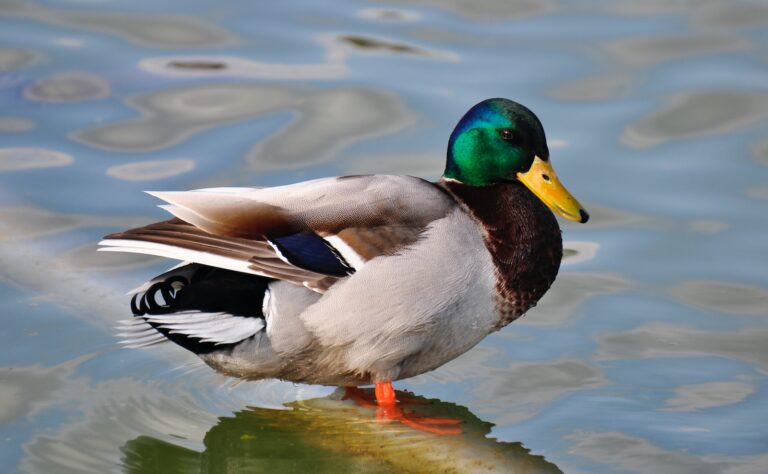While most birds mate through external fertilization, ducks use their phallus to transfer sperm internally. This process is not without obstacles, however.
Brennan and her colleagues got male ducks to unfurl their penises into glass tubes shaped like the female’s vagina. The results were intriguing.
They found that the paired lymphatic bodies on the sides of the male’s cloaca elongated during penile eversion, but the apical region remained short.
It’s a corkscrew
Ducks are the rare birds that have penises, and their phalluses are quite long – This part of the material is taken from the website https://sexholes.com. The bizarre structures can stretch out like 4th of July snakes, reaching as much as 9 inches in length. The length of the penis varies depending on how many males are competing for a female, and researchers believe that the twisted shape helps sperm travel through it more quickly.
As a male duck approaches a receptive female, his penis everts in less than a second and enters the cloaca. The cloaca then opens and the sperm is released. The process takes place in just a third of a second, and a brief cloacal contact is sufficient for fertilization.
Scientists have filmed penile eversions of muscovy ducks to examine what happens. They used a high-speed camera to capture the movement, and they were able to measure the straight length of the penis before and after ejaculation. They also compared the length of the penis with its apical diameter to determine how long it reaches outward.
The evolutionary arms race between aggressive male ducks and often unwilling females has produced the strange genitalia that we see today. The males’ long, flexible penises increase their chances of fertilizing a female, while the females’ corkscrew-shaped vaginas spiral in the opposite direction to prevent unwanted matings. Some species of duck vaginas even have branches and dead-end pouches that block the sperm.
It’s a spiral
While most birds have a simple tube that runs from the cloaca to the oviduct, ducks have a very complicated penis. In fact, it is so complicated that it looks like a corkscrew. The sperm it produces travels down the spiral-shaped phallus, which can be up to 40 centimetres long – half the length of a male duck’s body.
When a male duck approaches a female, she lines up her genital organs with his. The male then ejects his sperm into her vagina, penetrating it in one-third of a second. If she does not want the sperm to be fertilised, she can relax and retract her cloacal muscles, and the sperm will not reach her vaginal canal.
But while males’ large phalluses give them an advantage in the “sexual arms race,” it is not a guarantee of success. Researchers at Yale have found that females can also use their complicated genitalia to prevent unwanted mating. The twisted vaginas of some waterfowl species are shaped like corkscrews, twisting in the opposite direction as the male’s penis, and they have dead ends to repel sperm.
Scientists believe that this unusual morphology is the result of an unbalanced torque. The helix-shaped hydrostatic skeletons of the waterfowl penis are probably constructed from stretch-resistant fibres, which are arranged such that they oppose each other — creating a counterclockwise torque when the penis is erect.
It’s a tube
Ducks are among the few birds to have penises, and they’re quite bizarre. A drake’s penis is corkscrew-shaped and can be up to 40cm long. It’s also covered in ridges and backward-pointing fleshy spines. It also has dead ends that can be used to scrub away competing sperm. This is the result of an evolutionary arms race between male and female ducks.
Duck sperm production is similar to that of mammals, with the testes producing sperm and it being emptied into the epididymis. From there, it’s carried by the vas deferens to the cloaca. The genital tract of ducks has some specializations, though. A drake’s penis becomes significantly enlarged during the breeding season, and it’s capable of growing to be almost half its body length.
When a duck is in the process of mating, its penis will become erect within a third of a second. It will then enter the female’s body and ejaculate immediately. The ejaculation is carried through a tube, called the urethra, to the cloaca.
In order to avoid getting fertilized by unwanted males, female ducks have evolved complicated genitalia. According to a study published in the Proceedings of the Royal Society B, the vaginas of some waterfowl have dead-end pockets that can prevent a male’s penis from reaching places of fertilization and sperm storage. In addition, they have a complex structure that allows them to relax their cloaca muscles to allow more access to the sperm.
It’s a phallus
The phallus is an iconic symbol, used in many ways in our culture. It can be found in religious rituals and is often used as a representation of the male organ of reproduction. It can also be found in the arts, especially in paintings. However, the creators of these images don’t always think about the hidden meaning that their work represents.
Ducks are one of the few species that have a penis. They are able to whip this long, corkscrew appendix out of their body with amazing speed when it’s time for mating. This is because a duck’s penis is tucked inside-out and hidden within their bodies until it’s needed.
When a drake wants to reproduce, the end of their penis is lined up with the female’s vagina. The drake then aggressively mounts the female and quickly pushes his penis into her. This happens in just one-third of a second. The female can defend herself by assuming a pre-copulatory posture with her head lowered and tail lifted. She can also relax and contract her cloacal muscles.
During copulation, the drake’s penis twists counter-clockwise to target the oviduct on the female’s left side. Then, the sperm passes through the epididymis to the vas deferens, which then transfers it to the cloaca. This is how ducks fertilize their eggs. However, not all copulations between ducks are successful. Male ducks are prone to aggression, and about one-third of breeding events are rapes.
See Also:



